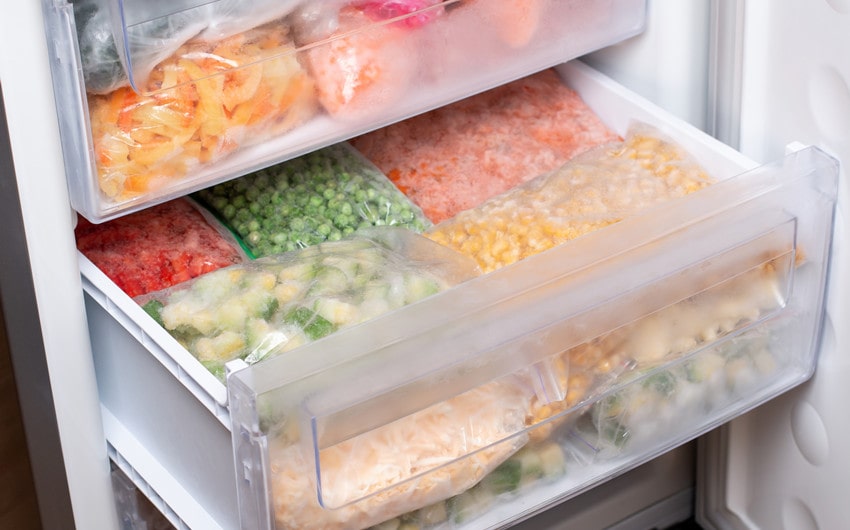5 Mistakes Event Planners Make with Food Storage (And How to Avoid Them)
When it comes to event planning, food is often the star of the show. Whether it’s a wedding, corporate gathering, or festival, the culinary experience can make or break an event. However, one aspect that is frequently overlooked is food storage. Proper food storage is crucial not only for maintaining quality but also for ensuring food safety. Here are five common mistakes event planners make with food storage and how to avoid them.
1. Neglecting Temperature Control
One of the most critical aspects of food storage is maintaining the right temperature. Food that is not stored at the correct temperature can spoil quickly, leading to foodborne illnesses.
How to Avoid This Mistake
- Use Refrigerated Trailers: For outdoor events or large gatherings, consider using refrigerated trailers. These units can maintain a consistent temperature, ensuring that perishable items remain safe to consume. Companies like Ice Cool Trailers offer a range of options that can cater to various event sizes and needs.
- Monitor Temperatures: Invest in digital thermometers to regularly check the temperature of your food storage units. The safe temperature for cold food is below 5°C, while hot food should be kept above 63°C.
2. Overlooking Cross-Contamination
Cross-contamination is a significant risk in food storage, especially when raw and cooked foods are stored together. This can lead to serious health risks, particularly with items like poultry and seafood.
How to Avoid This Mistake
- Separate Storage: Always store raw and cooked foods separately. Use colour-coded containers or labels to easily identify which items are raw and which are ready to eat.
- Use Proper Containers: Invest in airtight containers that are specifically designed to prevent cross-contamination. This not only helps with food safety but also keeps food fresher for longer.
3. Inadequate Planning for Food Quantity
One of the most common mistakes event planners make is not accurately estimating the amount of food needed for an event. This can lead to either food waste or running out of food entirely.
How to Avoid This Mistake
- Use a Food Calculator: There are numerous online tools and calculators that can help you estimate food quantities based on the number of guests and the type of event.
- Consult with Caterers: If you’re working with a catering service, don’t hesitate to ask for their input on food quantities. They have experience and can provide valuable insights based on similar events.
4. Ignoring Food Labelling
Proper labelling is often an afterthought for many event planners. However, it plays a crucial role in food safety and organisation. Without clear labels, it can be easy to lose track of what food items are available and when they were prepared.
How to Avoid This Mistake
- Label Everything: Use clear, waterproof labels to mark all food items with the date they were prepared and any relevant allergen information. This not only helps with organisation but also ensures that guests with dietary restrictions can make informed choices.
- Create a Food Inventory: Maintain a food inventory list that includes all items, their storage locations, and their expiry dates. This can help you keep track of what needs to be used first and what can be stored longer.
5. Failing to Train Staff on Food Safety
Even the best food storage practices can be undermined by a lack of staff training. If your team is not aware of food safety protocols, all your efforts can go to waste.
How to Avoid This Mistake
- Conduct Training Sessions: Before the event, hold training sessions for all staff involved in food handling and storage. Cover essential topics such as temperature control, cross-contamination, and proper food labelling.
- Provide Resources: Equip your team with easy-to-understand resources, such as checklists or quick reference guides, that they can refer to during the event. This can help reinforce best practices and ensure everyone is on the same page.
Conclusion
Food storage is a vital component of successful event planning. By avoiding these common mistakes, you can ensure that your event runs smoothly and that your guests enjoy a safe and delicious culinary experience. Remember, the key to effective food storage lies in proper temperature control, preventing cross-contamination, accurate food quantity estimation, diligent labelling, and thorough staff training.
By implementing these strategies, you can elevate your event planning game and create memorable experiences for your guests. Whether you’re a seasoned planner or just starting, paying attention to food storage can make all the difference. So, the next time you’re preparing for an event, take a moment to review your food storage practices. Your guests will thank you for it!







